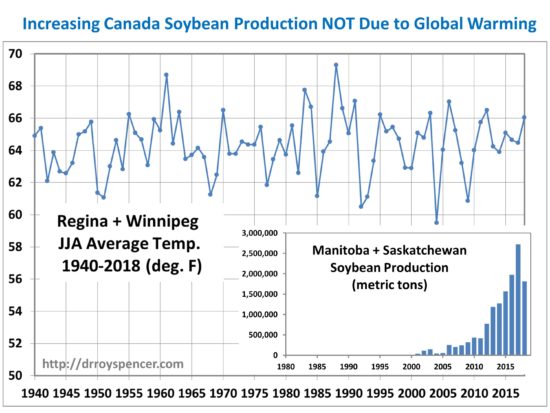There is no shortage of articles claiming that global warming is causing agriculture of certain crops to push farther north, for example into the southern Canadian Prairie provinces of Manitoba and Saskatchewan.
My contacts in the grain trading business tell me that the belief is widespread.
For example, here’s a quote from a Manitoba Co-operator article,
Lutz Goedde, of the management and consulting firm McKinsey & Company, said Canada is in a unique position because of its northern latitude and large supply of fresh water…. Pointing to the steady northward trek of corn and soybeans, the agricultural business consultant said that the effects are already evident.
The problem with this view is that the two main weather stations located in this region (Regina and Winnipeg) do not show a statistically significant warming trend during the prime growing months of June, July, and August:

So what is really happening? The amount of various grains produced each year is the result of many factors, for example demand, expected price, and tariffs. All of these affect what crops farmers decide to plant. For example, Canadian soybean production has responded to increasing global demand for soybeans, especially in China where increasing prosperity has led to greater consumption of pork and poultry, both of which use soybean meal for feed.
So, once again, we see “global warming” being invoked as a cause where causation either doesn’t exist, or is only a minor player.

 Home/Blog
Home/Blog



